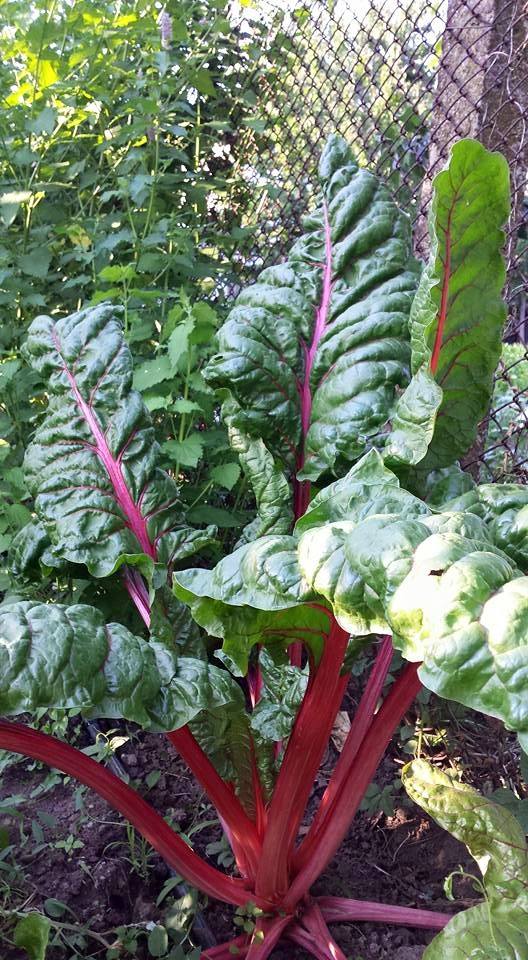News
How organic farming will save us all – if we can throw away our antiquated notions of what it means
 If there is a stereotype of the organic farmer it’s that they spend their days wrapped in droopy clothes made of hemp and burlap, becoming one with nature while foraging for chanterelles. Yet the reality of many organic farmers couldn’t be further from the truth. For those serious about agriculture free of synthetic chemicals, farming is a complex system that requires endless days of laborious work, with the potential to yield lucrative results.
If there is a stereotype of the organic farmer it’s that they spend their days wrapped in droopy clothes made of hemp and burlap, becoming one with nature while foraging for chanterelles. Yet the reality of many organic farmers couldn’t be further from the truth. For those serious about agriculture free of synthetic chemicals, farming is a complex system that requires endless days of laborious work, with the potential to yield lucrative results.
This is the case for Brent Preston, who used to spend his days in front of a computer cooped up in an office cubicle. Now he looks after an organic farm in Caledon, Ontario, which he bought when life in the city started to feel like a rat race that wasn’t worth the long sprint. Farm life means Preston’s days start earlier than they used to: he is up by 6:30 a.m., managing a crew of employees who begin work at seven in the morning. The rest of his 12-hour shifts go by in a satisfying blur, stitched together with the routine cycle of planting, watering, weeding, harvesting and loading trucks ready to take shipments to the city in the afternoon.
Despite developing a cult following among some of Toronto’s best chefs with his produce, Preston’s ambition was never merely to grow more flavourful vegetables. It was to create a self-sustaining agriculture system. “The farm is meant to be environmentally sustainable,” he says. “Not just in avoiding chemical fertilizers and pesticides, but in building soil health to create conditions that allow the kind of agriculture we’re doing here to go on in perpetuity.”
To accomplish this, half of the land on Preston’s farm is used to grow crops he will never eat, sell or even feed livestock. Instead, he’ll use it to cultivate the soil. These are called cover crops. They are part of what allow Preston and organic farmers like him to continue improving their farming outputs with naturally added nutrients that counteract the soil depletion that comes with harvesting.
For millenniums, crop rotation – the practice of moving crops and livestock around to ensure too much of one nutrient is never depleted – was the go-to method for maintaining soil health. During the Middle Ages, three-field rotation – a system where one field is allowed to rest every crop cycle – took over. This was the standard method of farming until less than a century ago, when increased food production became the goal. This meant that all available farmland would be put to use to grow crops. In order to increase output, conventional farms stopped employing crop and field rotation, and started growing in monocultures – the practice of growing and harvesting a single crop continuously from the land.
The idea that organic farming produces more nutritious food isn’t likely to surprise many. If anything, it reminds us of a hemp-clad stereotype droning on about their healthier way of life. Yet, organic farming isn’t just about producing more nutritious food from healthy soils, or about omitting the use of pesticides, fertilizers, genetically modified organisms, antibiotics or growth hormones. At its core, it is a system of agriculture that addresses a range of environmental and economic issues that go beyond the personal health of whomever brought the smug look and organic kale salad for lunch.
Organic farms generate more money per acre than their conventional counterparts. Even though they are not as big, they are usually far more profitable. “The amount of money we generate per acre on the farm is many multiples per acre of what our neighbours produce growing cash crops,” says Preston. A well-run small-scale organic farm will generate somewhere in the neighbourhood of $40,000 gross sales per acre. Corn and soy, known as “cash-crops” generate an average of $300 per acre, according to a 2016 paper published by the Department of Agricultural and Consumer Economics at the University of Illinois.
Although organic farms are much smaller than conventional cash crop farms, the price discrepancy alone might make it seem like everyone should farm organically. Yet, making the switch is difficult for those already in the conventional system. Many farmers take over a family business, and organic practices require completely different equipment than conventional agriculture, which is expensive to buy.
Additionally, in Canada it takes 36 months to convert a conventional farm to certified organic. During that window, farmers can’t raise prices to reflect increasing costs because – although they have begun employing organic practices – they have to wait for the 36-month window to pass before their efforts are recognized. Federal subsidies also favour cash crop producers over organic. In the U.S., the Department of Agriculture dispenses upwards of USD $25 billion a year to farm business, with a preference for major cash crop producers. According to an analysis from the Environmental Working Group, a not-for-profit environmental research organization, approximately three-quarters of all agricultural subsidies go to just 10 per cent of the nation’s largest farms.
In Canada, government expenditures in support of the Canadian Agriculture and Agri-Food System – a supply chain that manages cash crop production and distribution – were estimated by the Government of Canada to be $5.3 billion from 2015 to 2016. Although the federal government has committed to supporting organic farms, the financial rewards are much smaller: since 2006, the federal government has supplied $20 million to organic farming research, and in 2015, it invested $785,660 to the Canadian Organic Trade Association.
Using valuable farmland to grow crops just to fertilize the land might seem backwards for those looking to maximize profits or feed the planet. But consider today’s state of affairs in which our meat consumption and food waste has created a lopsided portrait of the standard North American diet: 33 per cent of croplands on the planet are used for livestock feed production; North American supermarkets reject over 30 per cent of fruits and vegetables because they aren’t attractive enough for consumers; the David Suzuki Foundation notes that in Toronto alone, single-family households discard about 275 kilos of food waste each year, meaning one in four food purchases made in the city ends up in the trash.
The Toronto Food Policy Council has found that Toronto taxpayers spend nearly $10 million per year getting rid of food waste that’s not properly composted. We are growing food that we are not eating, and large sums of money and cropland are already being wasted as a result.
The prevailing attitudes towards organic agriculture have hardly reflected these facts. In 1971, then U.S. Secretary of Agriculture Earl Butz famously said, “Before we go back to organic agriculture in this country, somebody must decide which 50 million Americans we are going to let starve or go hungry.” Today, critics continue to argue that chemical-free agriculture relies on more land to produce less reliable, smaller crop yields, and that we must continue to produce more food in order to feed the world.
Yet in “Exploring the biophysical option space for feeding the world without deforestation,” a 2016 paper in the scientific journal Nature Communication, researchers found that if we do not increase the amount of food we currently produce, and do not convert any more forests or grasslands into agricultural operations, we could feed our expected 2050 population of 9.5 billion people by simply converting to organic, plant-based diets.
But mitigating waste and allocating valuable farmland to feed our globally increasing taste for meat – on track to increase from 75 pounds in 2014 to 78.3 pounds per person by 2024, according to data from the Organisation for Economic Co-operation and Development – are not the only factors contributing to our food supply problems. Experts warn that the future of farming will be one that must deal with drought.
In 2016, an unexpectedly strong El Niño coupled with record high temperatures had a disastrous effect on crops and rainfall across southern and eastern Africa, leaving over 36 million people hungry. Extreme droughts have also been seen in record numbers in Australia, Asia, the U.S. and at home in Canada.
Last year, the planet permanently passed the threshold of 400 parts-per-million of atmospheric carbon dioxide for the first time in millions of years, according to an atmospheric measuring station at Cape Grim in Australia, marking a tipping point for the earth’s pollution that more-or-less confirms the future will see even more tragic climate impacts. Multiple reports from scientists at Stanford University, among others, have predicted the earth will continue to see less and less rain, warning that what we consider severe conditions now should be seen as the new normal.
This is where the role of organic farming becomes critical. Organically managed farms have been shown to produce higher yields than their conventional counterparts during droughts, according to one of the biggest studies ever done on organic farming and published in the journal Nature Plants in 2016. The study analyzed 40 years of science comparing organic and conventional farming practices, and found that well-managed, nutrient-dense organic soils are capable of retaining more moisture during times of drought, allowing them to continue producing crops in drought conditions.
“Organic farming systems have more organic matter in their soil, like compost and green manures,” says Dr. John P. Reaganold, lead author of the study and professor of soil science and agroecology at Washington State University. “Organic soils act like a sponge; they hold water. Under a drought condition, any soil that’s higher in organic matter is going to hold more water, meaning a plant growing in that soil will do better.”
Over the last two decades, these ideals have begun gaining some traction, not just in the organic farming community, but also in agricultural systems combining both conventional and organic practices. These systems are known as Integrated Farming (IF). According to Dr. Reaganold, IF systems employ approximately 60 to 70 per cent organic practices, and 30 per cent conventional. These techniques allow growers to efficiently deal with common problems like weeds with the use of synthetic herbicides, while also reaping many of the environmental, economical and personal benefits of organic agriculture.
Yet, systems that combine both organic and conventional practices continue to be difficult to implement in Canada. Agriculture programs at universities and colleges have only recently begun teaching alternative organic farming methods. “For years, we had interns come and work on our farm,” says Preston. “We never once had an agriculture school graduate even apply to work with us, because they’re all trained to do large-scale, mechanized, chemical intensive agriculture.
In recent years, the popularity of organic farming programs has increased. But while it is vitally important that interest in organic agriculture continues to grow, it will always be difficult to prompt people to buy less and pay more, even when we’re wasting so much of what we do buy. Alternatively, feeding the planet continues to prove much more complicated than merely maximizing the amount of calories produced per acre through nutrient-depleted monoculture farming and cash crop production of wheat, soy and corn – even with an exponentially growing population.
Sourse: http://news.nationalpost.com
- Details
- Created: 12 January 2017
- Hits: 121751













